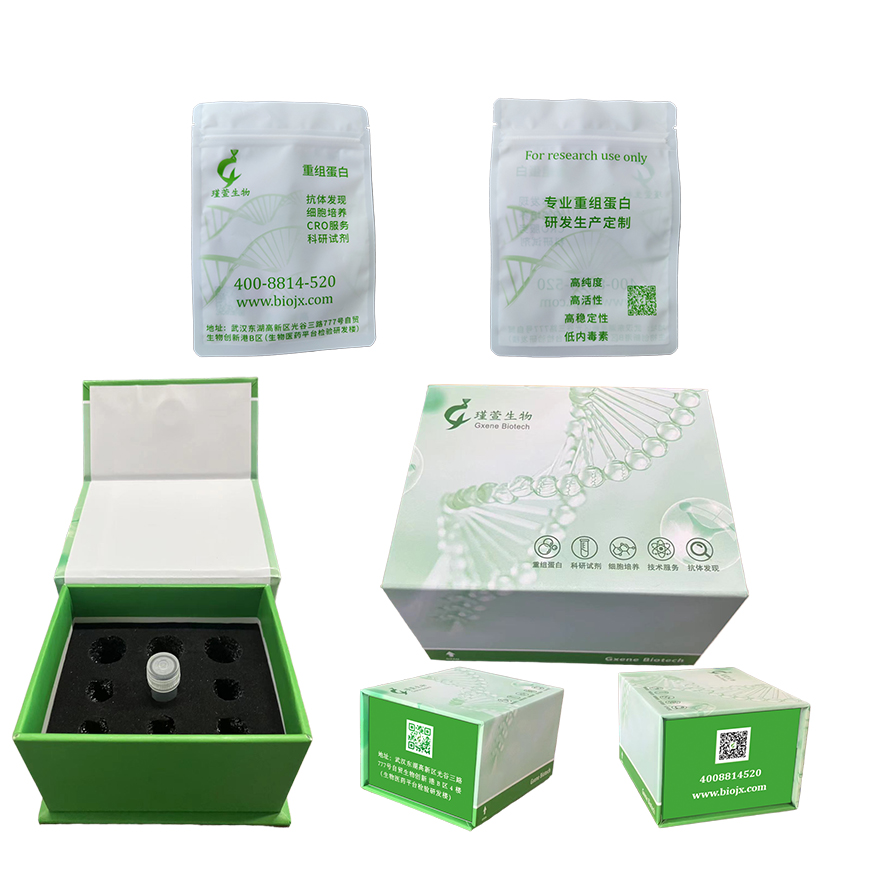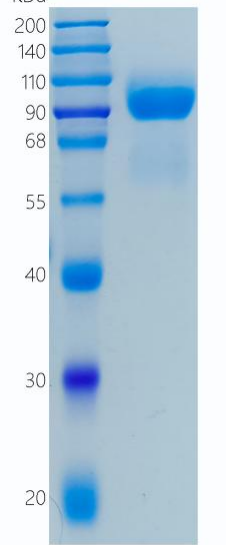研究方向
G-CSFR/CD114 是粒细胞集落刺激因子 (CSF3) 的受体,通过控制中性粒细胞谱系细胞的增殖、分化和存活,在协调粒细胞成熟中发挥着关键作用。这种同二聚体受体与两个 CSF3 分子结合,形成调节重要细胞过程的关键相互作用。除了参与细胞成熟之外,G-CSFR/CD114 还可能有助于细胞表面的粘附或识别事件。此外,它与 CEACAM1 的相互作用充当调节轴,通过招募 PTPN6 下调 CSF3R-STAT3 通路,随后 PTPN6 使 CSF3R 去磷酸化并调节细胞信号传导动力学。
After reconstitution, the protein solution is stable at -20℃ for 3 months, at 2-8℃ for up to 1 week.未开盖的干粉蛋白在 -20°C至-80°C可保存12个月;
复溶之后,蛋白溶液在-20°C及以下可保存3个月,在2-8℃可保存1周。
背景信息
Granulocyte Colony Stimulating Factor (G-CSF) is a pleiotropic cytokine best known for its specific effects on the proliferation, differentiation, and activation of hematopoietic cells of the neutrophilic granulocyte lineage. G-CSF plays an important role in defense against infection, in inflammation and repair, and in the maintenance of steady state hematopoiesis. Recombinant human G-CSF has been approved for the amelioration of chemotherapy induced neutropenia as well as for severe chronic neutropenia following marrow transplant.
Cell activation by G-CSF is mediated by a type I membrane protein belonging to the cytokine receptor superfamily. Human G-CSF R is 836 amino acids (aa) in length, with 24 amino acid signal sequence, a 603 aa extracellular domain, a 23 aa transmembrane domain, and a 186 aa cytoplasmic domain. As a result of alternative splicing, at least four isoforms of G-CSF R that differ in their C-terminal region exist. Isoform 2 lacks the transmembrane region and may represent a soluble form of the receptor. The existence of 80 & 85 kDa forms of soluble G-CSF R in human serum has been reported. Mutations have been found in the gene encoding G-CSF R in some patients with severe congenital neutropenia. These mutations typically led to a truncation in the cytoplasmic domain of the G-CSF R leading to maturation arrest of neutrophil precursors in the bone marrow and neutropenia in peripheral blood. Human and mouse G-CSF R have a homology of 62.5%.
G-CSF R is expressed in mature neutrophils, neutrophilic precursors, myeloid leukemia cells, and placenta. Binding of G-CSF to its receptor induces dimerization or oligomerization of the receptor activating cytoplasmic tyrosine kinases. Signal transduction from pathways that involve Janus tyrosine kinases/signal transducer and activator of transcription proteins (Jak1, Jak2, and Tyk2/STAT3, STAT3, and STATG), src-related protein tyrosine kinases (Lyn and Syk), Ras/MAP kinase, and phosphatidylinositol have been reported to be activated upon G-CSF stimulation.


